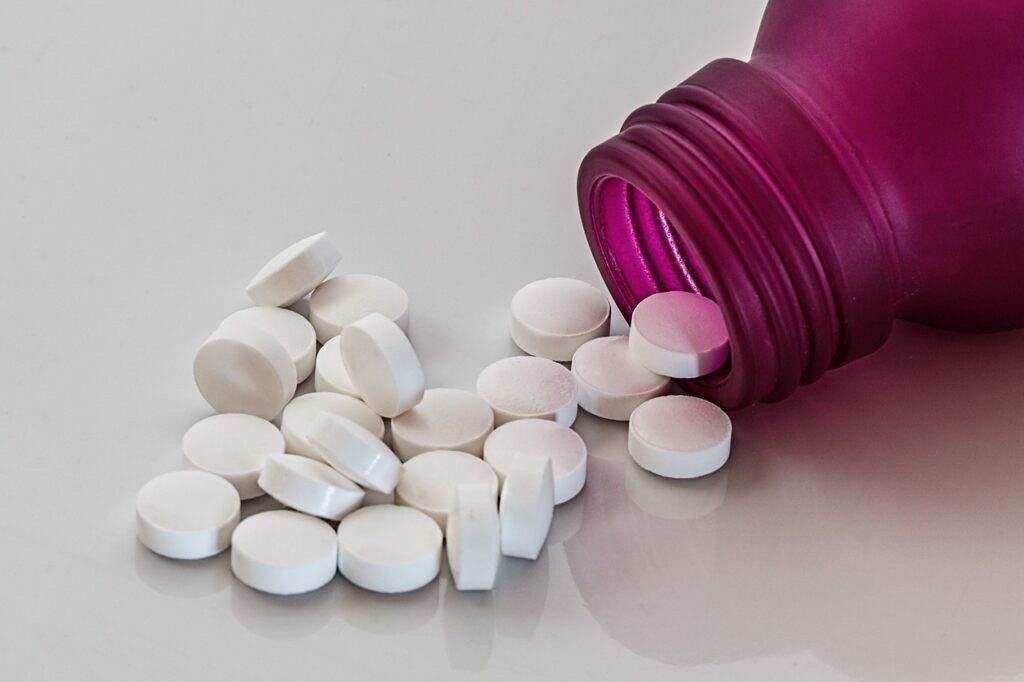20+ Years Experience
Specialist Inpatient Rehabilitiation

Are you worried about a friend or family member? Do you suspect drug abuse or alcoholism?
In this article, we will uncover signs of a drug addict. There are a number of physical signs of drug addiction which include changes in body weight and unusual body odours.
Behavioural signs of substance abuse may manifest as mood changes, secretive behaviour, or social withdrawal.
Prevention and early intervention are essential for decreasing the potential of developing an addiction to alcohol or other substances.
Drug addiction, also known as substance use disorder, can manifest itself in various ways.
One of the first things people often notice are changes in the physical appearance of drug users struggling with addiction.
These changes can range from alterations in body weight to slurred speech, poor coordination and unusual body odours.
Let’s explore some of these physical signs to better understand how drug addiction can impact a person’s life.
As drug addiction progresses, individuals may begin to neglect their personal hygiene, leading to a decline in their overall appearance.
Bloodshot eyes, droopy eyelids, and injection sites are some of the physical signs that may indicate drug addiction.
It is crucial to pay attention to these changes in appearance, as they can be early warning signs of developing addiction.
Remember, early intervention is key to preventing the devastating consequences of drug addiction.
Another physical indicator of drug addiction is sudden weight loss or gain. Substance abuse, including prescription drug abuse, can affect appetite and metabolism, leading to fluctuations in body weight.
For example, weight reduction is a common manifestation of drug use, particularly in cases of cocaine dependence, methamphetamine addiction, and misuse of MDMA (a highly addictive drug).
Monitoring changes in weight can help identify potential drug use and prompt a timely intervention.
Unusual body odour may also be a sign of drug addiction. Certain substances, including alcohol abuse, may result in:
Being mindful of these changes can help identify drug addiction and encourage appropriate intervention.
In addition to physical signs, drug addiction often manifests itself through various behavioural changes. These include mood changes, secretive behaviour, and social withdrawal.
Recognising these behavioural signs of substance abuse is crucial in identifying drug addiction and providing timely support to those in need.
Mood swings can be a result of drug use, as substances can have a detrimental effect on emotions and mental health.
Taking drugs can result in:
If you notice sudden and inexplicable changes in mood in yourself or someone you care about, it may be time to seek professional help to address the underlying cause of the mood changes, such as substance use disorder.
Secretive behaviour may be indicative of drug addiction, as individuals may attempt to conceal their substance use from others.
Indications of drug use in clandestine conduct may include:
Recognising physical and psychological signs of secretive behaviour can help identify drug addiction and encourage appropriate intervention.
Social withdrawal is another behavioural sign of drug misuse.
Individuals may isolate themselves to facilitate the use of drugs or evade discussion concerning their substance use.
Common signs of drug use in social withdrawal may include:
Addressing social withdrawal early on can help prevent further isolation and the progression of addiction to alcohol and other drugs.
Drug abuse not only affects a person’s physical health but also their mental well-being. Psychological signs and symptoms of drug abuse include anxiety, depression, and paranoia.
Understanding these symptoms can help in identifying drug misuse and providing the necessary treatment plan for recovery for long term abuse.
Anxiety is a common psychological symptom of drug addiction. Using drugs can cause feelings of unease and restlessness, leading to anxiety.
Symptoms of anxiety for drug users may include:
Recognising these symptoms can help identify drug addictions and seek appropriate treatment to treat anxiety and address the underlying cause.
Depression is another psychological symptom of alcoholism and drug dependence. Substance abuse can potentially result in feelings of hopelessness and despair.
Manifestations of depression brought on by drug abuse may include sentiments of despair, disinterest in activities, and alterations in appetite.
Identifying general signs of depression can help in providing timely support and treatment for individuals struggling with a drug problem.
Paranoia is a psychological symptom associated with drug abuse. Certain substances can cause irrational fears and suspicions, leading to paranoia.
Symptoms of paranoia associated with drug abuse may include suspiciousness, delusions, and hallucinations.
Recognising these signs of paranoia can help identify drug and alcohol addiction and provide the necessary support to address this issue.
Identifying specific drug usage is essential in determining the appropriate treatment and intervention methods.
Different substances have unique signs and symptoms, and recognising these signs can help in tailoring treatment plans to address the particular drug being abused.
In this section, we will discuss specific signs related to opioids, stimulants, and hallucinogens.
Opioid use may cause sedation, constriction of pupils, and constipation. Recognising these physical symptoms of opioid use can help identify addiction and provide the necessary support for recovery.
Opioid addiction is a serious issue, and timely intervention is crucial in preventing further harm and improving the individual’s well-being.
Stimulant use can result in increased energy, rapid or rambling speech, and dilated pupils.
Identifying these signs of stimulant use can help in providing appropriate intervention and support for a person struggling with stimulant addiction.
Stimulant abuse can have serious consequences, and early intervention is vital in preventing long-term harm.
Hallucinogen use may lead to hallucinations, altered perceptions, and difficulty distinguishing reality.
Recognising these signs of hallucinogen use can help identify addiction and provide the necessary support for recovery.
Hallucinogen abuse can have a significant impact on an individual’s mental health, and timely intervention is crucial in preventing further damage and ensuring a successful recovery.
As a parent, teacher, or concerned adult, recognising drug abuse in adolescents is crucial in preventing long-term addiction and negative consequences.
Adolescents may be more susceptible to peer pressure and experimentation, making them vulnerable to developing drug addiction.
In this section, we will discuss some common signs of drug abuse in adolescents, including changes in school performance, new support groups, and secretive behaviour.
Declining school performance may indicate drug use in adolescents, as substance abuse can impair concentration and motivation.
Indications of drug use in school performance may include:
Monitoring changes in school performance can help identify potential drug use and prompt a timely intervention to prevent further decline.
New peer groups may suggest drug use in adolescents, as they may seek out others who share their substance use habits.
Indications of drug use in peer groups may include:
Being vigilant of changes in social circles can help identify drug use and encourage appropriate intervention.
Secretive behaviour in adolescents can be a sign of drug addiction. Some indications of drug use in secretive conduct may include:
It is important to be aware of these signs and seek help if you suspect drug addiction in a teenager.
Recognising these signs of secretive behaviour can help identify drug addiction in adolescents and encourage appropriate intervention.
Seeking professional help is crucial when signs of withdrawal or overdose are present.
Timely intervention, such as medical detox, can save lives and improve the chances of a successful recovery.
In this section, we will discuss the importance of seeking professional help when faced with withdrawal symptoms or signs of overdose.
Withdrawal symptoms can include flu-like symptoms, tremors, and seizures, indicating a need for medical intervention.
Recognising these symptoms is crucial in seeking timely help and support for individuals struggling with drug addiction.
Medical intervention may be required to manage the manifestations of drug withdrawal, such as tremors and seizures.
Overdose signs may include unconsciousness, difficulty breathing, and seizures, requiring immediate emergency care.
Recognising these signs of drug overdose is vital in seeking prompt medical attention, as drug overdose can be life-threatening.
Timely intervention by more than one doctor can save lives and prevent further harm to the individual and their loved ones.
Prevention and early intervention are key to reducing the risk of drug addiction and its consequences. In this section, we will discuss various prevention strategies and the importance of early intervention in addressing drug addiction.
By implementing these strategies and interventions, we can help individuals lead fulfilling, drug-free lives.
Prevention strategies include educating individuals about the dangers of drug use, promoting healthy coping mechanisms, and monitoring use of prescription drugs.
Providing education on the dangers of drug use can help individuals make informed decisions about their substance use and avoid the negative consequences of addiction.
Promoting healthy coping mechanisms and alternatives to drug use can also prevent individuals from turning to substances as a means of escape or self-medication.
Early intervention is crucial for successful recovery, as it allows for timely treatment and support for individuals struggling with addiction. By identifying drug abuse early on and providing appropriate support and treatment, we can help prevent further harm and improve overall well-being. Early intervention strategies may include educational and awareness campaigns, early identification of drug use, and access to treatment and support services.
In addition, family members and community support can play a significant role in assisting individuals experiencing addiction.
In conclusion, recognising the signs and symptoms of drug addiction is crucial in preventing long-term consequences and promoting recovery.
By understanding the physical, behavioural, and psychological indicators of drug abuse, we can better identify and address the issue before it spirals out of control.
Prevention and early intervention are key to reducing the risk of drug and alcohol abuse and its consequences.
With the right knowledge and support from trained professionals, you can overcome addiction and lead a fulfilling, drug-free life.
Addiction is a serious problem that manifests in various ways, such as feeling the need to use drugs regularly, having intense urges that prevent other thoughts, and needing more of the drug over time.
Psychological symptoms are also common indicators of addiction.
To diagnose a drug addict, you should consult a psychiatrist, psychologist, or licensed alcohol and drug counsellor for a thorough evaluation.
Blood, urine or other lab tests can be used to assess drug use.
These should be used in combination with observing signs and symptoms and behaviours such as:
These symptoms and behaviours can be indicators of drug use and should be taken into consideration when diagnosing a drug addict.
It is important to note that drug addiction is a complex disorder, and a thorough evaluation is necessary.
Addiction can manifest in anxiety or depression, memory problems, and mood swings such as temper flare-ups, irritability, and defensiveness.
It can also be evidenced by a need for increased medication dosage.
Changes in physical appearance, weight fluctuations, and distinct body odours are common indicators of drug addiction.
Drug abuse can result in symptoms such as anxiety, depression, and paranoia.
These symptoms can have a significant impact on a person’s life, leading to difficulty in functioning in everyday activities.
They can also lead to social isolation and a decrease in income.
There are a range of other services that we can provide. Have a look at the list below for more information:




















We Aim To Reply To All Enquiries With-in 24-Hours